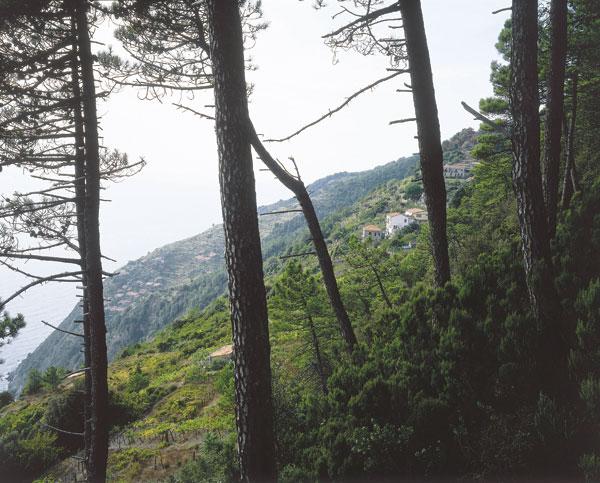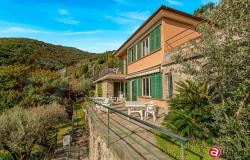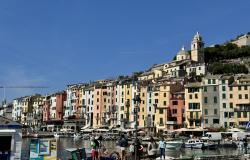The ‘Italian Riviera’, as it is affectionately known, is the stretch of coastline that joins France and Tuscany. The word ‘riviera’ in Italian simply means shore, and the area from Ventimiglia to Genoa is called the Riviera di Ponente. This region boasts some of the most refined beaches in the world, their swaying palm trees set against a backdrop of old fishing towns complete with precise shuttered buildings in an array of colours from pink to green. It’s a welcome change from the Cote d’Azur, with life being somewhat more easy-going and laid back. No one will mind if you’re not carrying the latest designer bag, and you can be sure that prices will be lower.
Food and Wine
This is the area where the ‘Brits’ used to flock to in the 1920s because of its mild and sunny winter weather. The area is sheltered by the Maritime Alps, and lemons, oranges and flowers thrive in the winter sun. Some of the best olive oil in the world is produced here, from villages such as Moltedo and Chuisavecchia. This is, of course, according to the Ligurians, the Tuscans may have something to say about that!
Western Liguria has always looked to the sea for survival. It has always been poor in resources but full of tenacious seaman and merchants. Columbus, Garibaldi and Mazzini all came from this area, and Genova was, and still is, an important seaport. As you may have guessed, the ‘cucina’ of the area is based on fish, with Ligurian fish stew similar to the French bouillabaisse. When visiting, try the local vino bianco o rosso: Pigato or Rossese.
Access
Access to the area is very good and therefore makes it ideal for buying a property. You can fly to Genoa or Nice, and now that airlines are offering cheaper flights, the choice is almost unlimited. There is a very good motorway link (autostrada) along the coast. Alternatively, you can use the Via Aurelia, which offers a beautiful scenic route. There is also a train service stopping at most of the well-known towns and villages, a bus can then be used to reach villages further inland.
The price of property varies from town to town and village to village, as you would expect. The closeness of the sea and a sea view always strongly influence price; some areas tend to be overpriced whilst others remain remarkably good value.
Ventimiglia
The first town you encounter after crossing the border at Menton is Ventimiglia. Depending on which road you take, your first impression will either be of somewhere quite dull or quite enchanting. I don’t think that this is a good place to buy a property if you really want to appreciate the Italian lifestyle. As with most towns that border another country, it doesn’t really seem like Italy. Often when visiting shops, the first language spoken is French, which does not really create a very ‘Italian’ atmosphere. Property here is also generally a little overpriced due to the area’s proximity to France.
Bordighera and San Remo
Moving further along the coast you will come to Bordighera, with its lovely beaches and regal promenades. This is another naturally beautiful place, and may be considered a typical ‘up-market’ seaside town. Property prices here are high, probably amongst the most expensive along this stretch of coast. The hillsides here are also covered with flowers but the speciality is palms, and Bordighera has the monopoly of supplying the Vatican during Easter week.
San Remo has always been known for wonderful period villas and grand hotels, and sometimes seems like the ageing queen of the Riviera. This is a large and bustling town, with everyone always seeming to be going somewhere. The Liberty-style casino adds to the nightlife, and here you will most certainly not be bored. San Remo is famous for the Festival of San Remo in February, a televised song contest that takes place to discover new talent.
Close to San Remo is one of the trendiest ghost towns, Bussana Vecchia. An earthquake hit the area in 1887 and turned the town into the picturesque place it is today. Officially it no longer exists, but a number of artistically-minded people have restored the interiors of the houses, connected services, and live there with two llamas from Peru! This is worth a trip if you are in the area.
Property in the town and outskirts of San Remo is pricey, and property inland will certainly sell for less; however, the hinterland is covered with poly-houses and certainly not as pretty as the olive groves of our next ‘stop’.
Imperia and Beyond
Imperia divides the ‘Rivieria of the Flowers’ from the slightly more rugged ‘Riviera of the Olives,’ and the oil here is rated the best in Italy according to experts. In 1923 Mussolini created Imperia by joining two towns, Porto Maurizio and Oneglia, to make a regional capital. This marriage means Imperia has an unusual charm. Oneglia is an olive oil port and a typical Italian town with delightful shops and pavement cafés.
If you prefer the pretty fishing village of Porto Maurizio with its coloured shuttered windows and narrow streets, then an apartment in the centre with three bedrooms, balcony, kitchen, living room and original doors and a ceiling with frescos can be found for around £145,000. These sorts of properties are centrally situated and close the sea and all amenities, making a car unnecessary.
Prices drop as you move further inland, and at Borgomaro, a typical Ligurian village 13 kilometres from the sea on the River Maro, a two-bedroom village house can be found for competitive prices. You will have to leave you car in the piazza and walk along the carugi (Ligurian cobbled streets) to your property.
Very close to Imperia you will find the typical seaside resorts of Diano Marina and Cervi, the latter being very attractive with its strawberry and cream houses perched just above the sea. Property here is expensive so don’t expect to find any bargains.
Alassio, the next larger town you will find, has good beaches and mild weather but other than that it’s nothing too special.
Moving further along you will come to Loano, a palm-shaded town, and Finale Liguria, another pleasant resort. The village of Balestrino is close and offers some property opportunities. Savona is a working capital and one of the busiest ports in Italy, but not the best place to buy a second home. It is, however, an interesting place to visit.
There are many other small villages along the route too numerous to mention. Until we come, of course, to Genoa. This is a huge city which stretches for 30 kilometres along the coastline. Part of its attractiveness is the fact that it is squeezed between the mountains and the sea. Here, as in any city, you can find anything and everything. I suggest you visit and give it a try.
Tips to Remember
Property prices are determined by the closeness of the property to the sea. A villa three kilometres from the sea may cost between £400,000 and £450,000, one further inland around 18 kilometres from the sea should cost half that much. So why not buy that? Well, some people say you could be anywhere once you are inland without a sea view, and you will find a more rural rather than glitzy ‘Rivieria’ atmosphere. So please don’t be fooled into thinking you have a bargain. It will not be worth more, and will be harder to sell, especially to Italians.
Everyone wants a terrace with a sea view. Decide how important it is for you. If you’re going to be close to the sea anyway is it worth it? As an investment it will be better; however, it is a matter of personal preference.
Most people ask for a property with two bedrooms, but you may prefer a property very close to the sea with a terrace overlooking the sea and only one bedroom, if you are on a fixed budget. Give it a thought.
I hope this article has given you a small insight into the Riviera and its many features, and that choosing the location of your dream home will now be somewhat easier.









